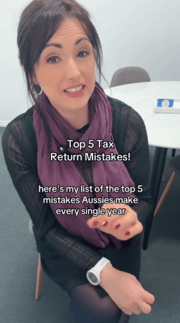‘Many Australians continue to experience financial challenges’: Meanwhile, MPs just scored a $15k raise
By
Maan
- Replies 0
Cost of living pressures continue to bite for many Australians, especially older citizens managing fixed incomes and rising expenses.
But while households tighten their belts, a new decision from an independent tribunal has sparked fresh debate about fairness and financial priorities.
Here’s what’s been quietly approved behind the scenes—and why it’s raising eyebrows.
Many Australians continued to tighten their belts as the cost of living remained a pressing concern—but some of the nation’s top leaders were quietly handed a boost to their pay packets.
From 1 July, a pay rise approved by the 2025 Review of Remuneration for Holders of Public Office was set to come into effect, benefiting federal politicians, senior public servants and departmental heads.
While the increase was described as ‘relatively modest’, it came at a time when many households were struggling to make ends meet.
Among those receiving a bump was Prime Minister Anthony Albanese, whose salary jumped from around $607,471 to over $622,000—a lift of about $15,000. Treasurer Jim Chalmers also saw his pay rise from $438,111 to $448,625, while Opposition Leader Sussan Ley’s income increased to $442,643. For backbenchers, salaries went up from $233,660 to $239,267.
The 2.4 per cent increase mirrored the inflation figure from March, according to the tribunal’s determination released on 11 June.
But the rise was still smaller than the Fair Work Commission’s minimum wage decision, which granted workers a 3.5 per cent increase above inflation.
‘The tribunal notes the domestic economy is continuing to stabilise following a period of elevated inflation and that many Australians continue to experience financial challenges,’ it stated.
‘In the current economic context, the tribunal considers an increase of 2.4 per cent appropriate.’
It added: ‘This adjustment reflects a measured approach, balancing the need for restraint given economic conditions with the recognition of the upward pressure on household costs.’
The independent tribunal, responsible for setting remuneration for federal politicians and public officials, highlighted its policy of delivering only ‘modest’ pay increases in recent years.
‘Including the current decision, the cumulative total of remuneration increases awarded by the tribunal since 2016 amounts to 18.65 per cent,’ it said.
‘In contrast, remuneration increases more generally in the public and private sectors (based on overall March WPI data from 2016–2025) equate to 25.6 per cent.’
Though described as restrained, the decision still drew scrutiny, particularly given the ongoing economic challenges faced by average Australians.
If you’ve been wondering how these pay rises keep slipping through—especially when so many are doing it tough—this report lays it all out.
It’s a must-watch for Aussies who’ve seen governments come and go, and still find themselves asking: who’s really looking out for us?
Settle in and see what you make of it.
Source: Youtube/Sky News Australia

With many older Australians watching every dollar, how does a politician’s pay rise sit with you during these tough times? Let us know your thoughts in the comments.
In a previous story, we looked into the controversial new super tax and how it appears to favour long-serving politicians—sparking frustration among everyday Australians.
For seniors who’ve worked hard, saved diligently, and now rely on their super to get by, the double standard can feel especially unfair.
If you missed that one, it’s worth a read to see how this issue ties into the broader conversation around political perks.
Read more: ‘The new super tax has been designed to excuse long-serving politicians': And it’s causing outrage
But while households tighten their belts, a new decision from an independent tribunal has sparked fresh debate about fairness and financial priorities.
Here’s what’s been quietly approved behind the scenes—and why it’s raising eyebrows.
Many Australians continued to tighten their belts as the cost of living remained a pressing concern—but some of the nation’s top leaders were quietly handed a boost to their pay packets.
From 1 July, a pay rise approved by the 2025 Review of Remuneration for Holders of Public Office was set to come into effect, benefiting federal politicians, senior public servants and departmental heads.
While the increase was described as ‘relatively modest’, it came at a time when many households were struggling to make ends meet.
Among those receiving a bump was Prime Minister Anthony Albanese, whose salary jumped from around $607,471 to over $622,000—a lift of about $15,000. Treasurer Jim Chalmers also saw his pay rise from $438,111 to $448,625, while Opposition Leader Sussan Ley’s income increased to $442,643. For backbenchers, salaries went up from $233,660 to $239,267.
The 2.4 per cent increase mirrored the inflation figure from March, according to the tribunal’s determination released on 11 June.
But the rise was still smaller than the Fair Work Commission’s minimum wage decision, which granted workers a 3.5 per cent increase above inflation.
‘The tribunal notes the domestic economy is continuing to stabilise following a period of elevated inflation and that many Australians continue to experience financial challenges,’ it stated.
‘In the current economic context, the tribunal considers an increase of 2.4 per cent appropriate.’
It added: ‘This adjustment reflects a measured approach, balancing the need for restraint given economic conditions with the recognition of the upward pressure on household costs.’
The independent tribunal, responsible for setting remuneration for federal politicians and public officials, highlighted its policy of delivering only ‘modest’ pay increases in recent years.
‘Including the current decision, the cumulative total of remuneration increases awarded by the tribunal since 2016 amounts to 18.65 per cent,’ it said.
‘In contrast, remuneration increases more generally in the public and private sectors (based on overall March WPI data from 2016–2025) equate to 25.6 per cent.’
Though described as restrained, the decision still drew scrutiny, particularly given the ongoing economic challenges faced by average Australians.
It’s a must-watch for Aussies who’ve seen governments come and go, and still find themselves asking: who’s really looking out for us?
Settle in and see what you make of it.
Source: Youtube/Sky News Australia
Key Takeaways
- Federal politicians and senior public servants were granted a 2.4 per cent pay rise from 1 July.
- Prime Minister Anthony Albanese’s salary increased by $15,000, with similar boosts for other top officials.
- The tribunal said the increase matched March inflation and was appropriate given current economic conditions.
- Despite being lower than private sector wage growth, the decision faced criticism amid widespread cost of living struggles.
With many older Australians watching every dollar, how does a politician’s pay rise sit with you during these tough times? Let us know your thoughts in the comments.
In a previous story, we looked into the controversial new super tax and how it appears to favour long-serving politicians—sparking frustration among everyday Australians.
For seniors who’ve worked hard, saved diligently, and now rely on their super to get by, the double standard can feel especially unfair.
If you missed that one, it’s worth a read to see how this issue ties into the broader conversation around political perks.
Read more: ‘The new super tax has been designed to excuse long-serving politicians': And it’s causing outrage








